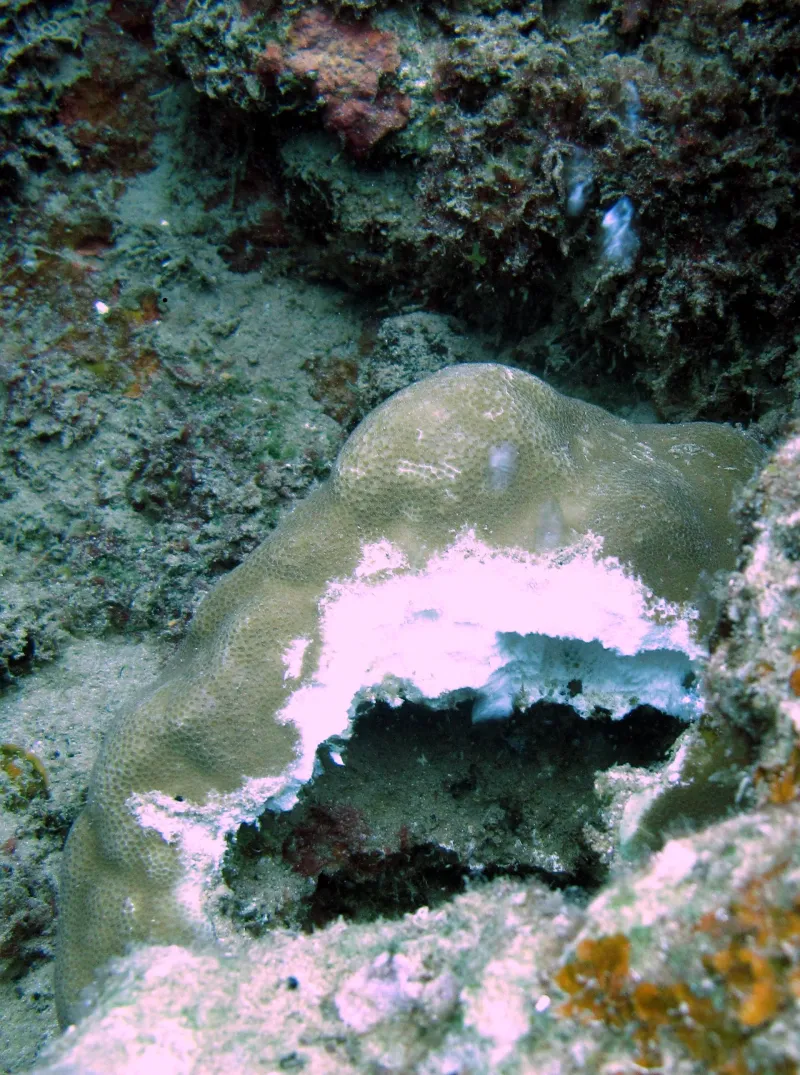Dissolving Coral Skeleton in Acidic Waters

Near the intense volcanic CO2 vents bubbling from the cracks in the seafloor, the water is so acidic that it dissolves coral skeletons.
Read more about how reef scientist Laetitia Plaisance uses carbon dioxide seeps to study ocean acidification and how it will affect biodiversity on coral reefs in the future.

